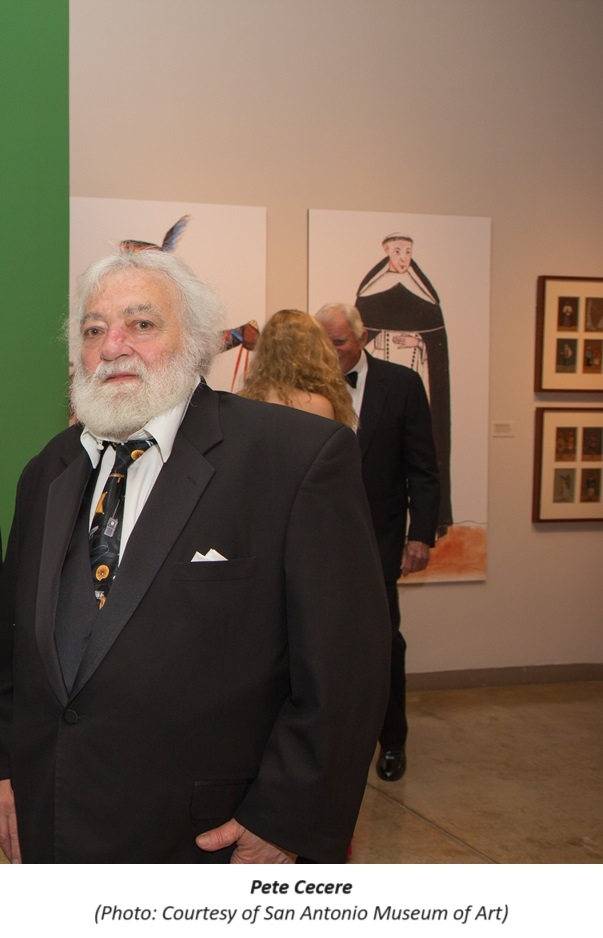Memories of Pete Cecere, by Bruce Gregory
 Pete Cecere and I met in 1971 when we worked in nearby offices in USIA’s Information Center Service. He was a Foreign Service Officer on his first Washington assignment working as a youth program officer; I was the Civil Service editor of a social science book program known as the “Current Thought Series.” I immediately joined the company of USIA practitioners who over the years were fortunate to count Pete as a friend.
Pete Cecere and I met in 1971 when we worked in nearby offices in USIA’s Information Center Service. He was a Foreign Service Officer on his first Washington assignment working as a youth program officer; I was the Civil Service editor of a social science book program known as the “Current Thought Series.” I immediately joined the company of USIA practitioners who over the years were fortunate to count Pete as a friend. Pete was a public diplomacy original. An extraordinarily talented field officer who gave true meaning to “the last three feet.” He had top drawer street smarts and language skills. He was committed to public diplomacy as a political instrument. He was a marvelous raconteur. And his culinary skills and world-class collection of Latin American and Spanish folk art are legendary.
In some ways, he was not a good fit in a profession where appearances matter and smooth talk is common. He had no use for dress codes. Profanity was a conversational norm. He could set it aside, however, when he thought the occasion warranted. He was without peer at spotting hypocrisy. He had zero tolerance for Washington’s bureaucracy, although he leveraged contacts with political appointees of both parties when he thought it mattered for field operations.
I never had the opportunity to observe Pete’s skills in the field. But in the early 1990s, I had occasion to visit with locally employed staff in USIS Barcelona where a few years before Pete had been Branch Public Affairs Officer. Unsolicited praise for Pete and tales of his exploits poured forth in abundance. He was USIS royalty in Barcelona.
Pete’s country PAO in Spain was McKinney Russell, one of the most skilled and admired public diplomacy officers of his generation. Pete’s and McKinney’s personalities and operating styles could not have been more different. But McKinney was a shrewd judge of public diplomacy talent, and Pete was proud of the glowing performance evaluations earned through his work in Barcelona.
Pete also impressed members of the US Advisory Commission on Public Diplomacy. When Iberia Airlines lost the luggage of a conservative Republican commissioner not known for a sense of humor, Pete turned Spain upside down and inside out for three days until the luggage was found and returned to the United States. A witty and unusually warm personal note of thanks followed. A liberal Democratic commissioner who expressed interest in Latin American folk art was invited to visit his home in Reston, VA, which then housed his collection. Pete was a consummate host who matched high quality dining with a houseful of museum quality art.
Many of Pete’s friends can attest to his gastronomical skills. Perhaps less well known was his enthusiasm for steamed crabs. On a number of occasions, my wife Paula Causey and I would gather with Pete and friends in our Capitol Hill back yard for crabs and beer. Pete always arrived with his own pick and mallet in a specially made carrying case and a fully-researched report on the quality of the season’s catch at the Washington Marina. He then would conduct a master class on the fine art of picking crabs. For Pete, absolutely no part of the crab (shell excluded) should be wasted.
We were beneficiaries of his collector’s eye. A foot-long 3-prong industrial strength electrical switch from Mexico City hung in our kitchen for years. A Latin American carved statue of St. George and the dragon joined Paula’s collection. A painted gourd adorned a book shelf. Pete would always check on them when he visited. His folk art was exhibited in the San Antonio Museum of Art, in museums in Tucson and Santa Fe, and of course in “Casa Cecere” his home in Rappahannock County, Virginia. It was the subject of a documentary film, an NPR radio interview, and a two-page spread in The Washington Post.
Pete was not just a public diplomacy original. He was an American original.
Bruce Gregory